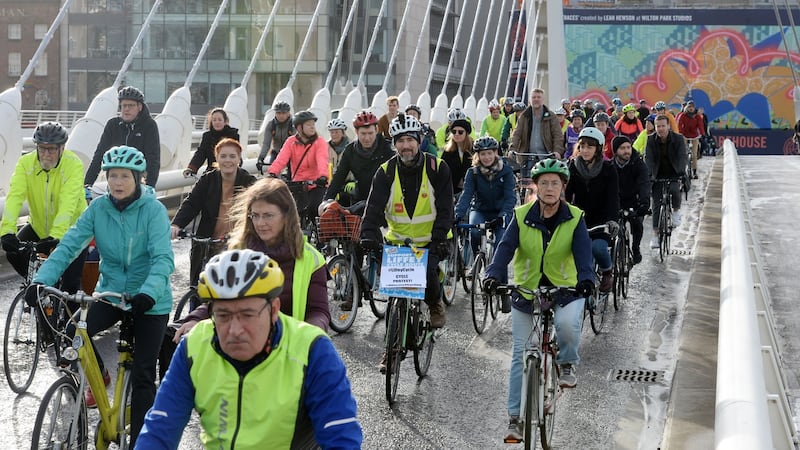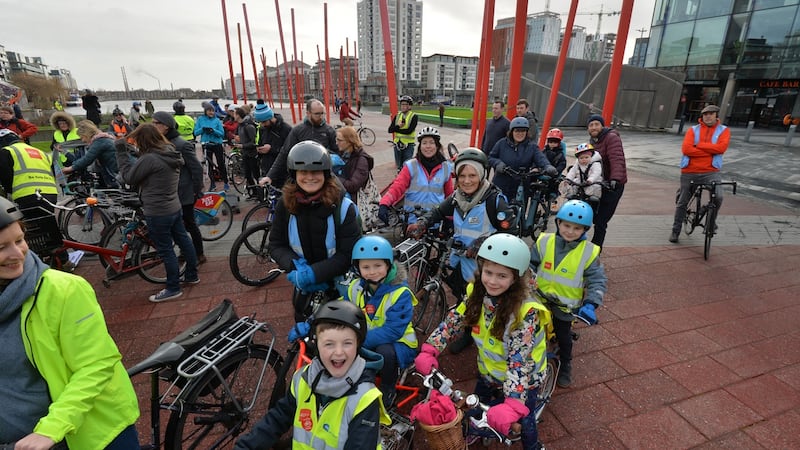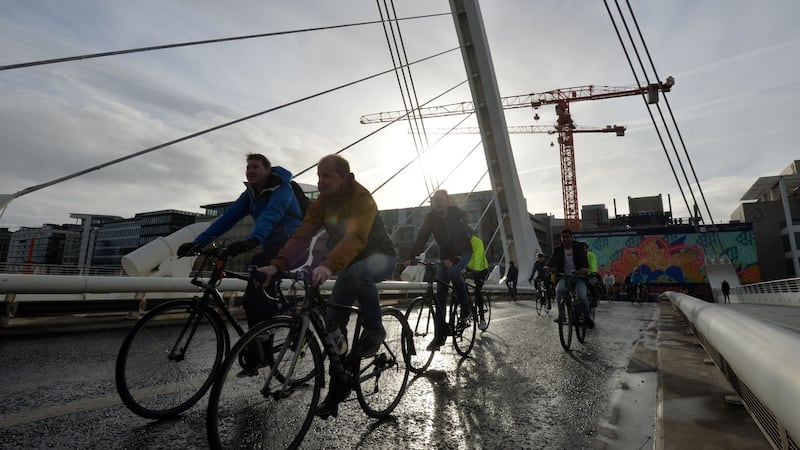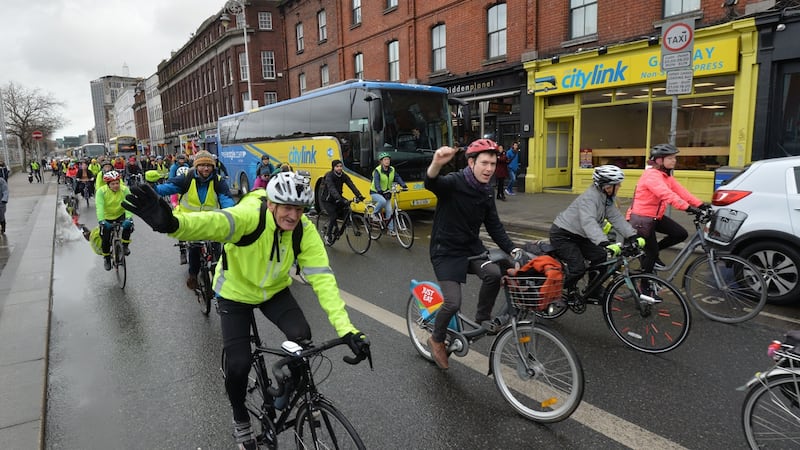More than 250 cyclists took to the banks of the river Liffey on Sunday morning calling for the implementation of the proposed cycle plan along one of the busiest stretches of road in Dublin’s city centre.
Cyclists of all ages took part in the protest, organised by the Dublin Cycling Campaign, moving from Grand Canal Square down the Liffey quays as far as the Dublin City Council offices before turning back along the north side of the river.
In April 2019 it was announced that a 5km cycle path from the Phoenix Park to the Tom Clarke Bridge had finally been selected by the National Transport Authority (NTA) after seven years of planning for the project. However, it emerged late last year that the estimated completion date was 2024.
Hundreds of cyclists set off from Grand Canal Square calling for the Liffey Cycle Route to be implemented as soon as possible along with immediate temporary measures along the quays to protect the safety of all vulnerable road users @dublincycling pic.twitter.com/LpIzyj2AyV
— Sorcha Pollak (@SorchaPollak) January 26, 2020

Dublin Cycling Campaign says Dublin City Council and the NTA must introduce temporary measures along the Liffey route in the interim to protect cyclists.
Custom House bollards
“We’ve seen the city council put in temporary measures in other places; they have bollards in front of the Custom House already,” says Kieran Ryan from the cycling campaign. “That same approach of temporary measures will create some semblance of a safe cycle route until we get around to building the proper infrastructure.”

At present, most of the Liffey quays area is dedicated to motorists, placing cyclists commuting along the river at real risk, said Mr Ryan. “For someone cycling, they’re sharing a lane with buses and taxis and then outside the bus lane you’re dealing with more traffic. It’s a lot of people constrained into a small space, all vying for a position, and when you’re on a bike you’re the most vulnerable.
“I don’t want to scare people but it really is survival of the fittest when you’re cycling along the quays.”

The new government must ensure 10 per cent of the transport budget is dedicated to cycling infrastructure, said Mr Ryan. "We don't have to always talk about Denmark or the Netherlands, we can look at Manchester, London and Paris. These are examples of cities that have gone from where we are now to functioning cycle networks in the space of months. We're talking about months as opposed to years and decades."
Reimagine the city
Campaign chairperson Kevin Baker believes the entire cycle route can be implemented within two years and that, in the meantime, trial sections should be introduced. “The Liffey route will be great for cycling, but there will also be huge bus improvements and improvements for people walking. It will reimagine the city and show a different way for pushing forward towards a more liveable city for the future.”
Vice-chairperson of the campaign, Louise Williams, says infrastructure is not only necessary for cyclists already on the roads, but also for the countless people who want to cycle but fear doing so could put their lives at risk.

“It’s such an obvious point – the more people who cycle, the better it is for everybody. There’s less congestion, less pollution, we can all get around more easily, we can predict our journeys much better, it’s better for our physical and our mental health... How good it is for our brain health, and our feeling of independence and autonomy, for kids to grow up cycling.”
The recent decision by Dropbox to join Dublin Cycling Campaign as a corporate member indicates the growing support for a more cycling-friendly city, said Ms Williams. “Suddenly we’ve got a major player in the industry here in Dublin saying this is an important issue and we want it to be prioritised. We feel the Government may be more likely to listen now that we have Dropbox, and it’s quite likely other organisations will join now.”













